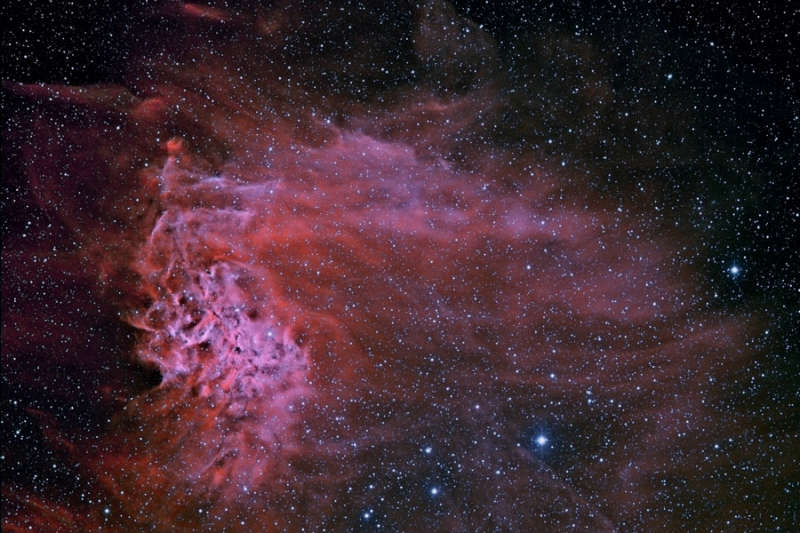Credit & Copyright: Jorge Garcia
Explanation:
Is star AE Aurigae on fire? No.
Even though
AE Aurigae is named the flaming star,
the surrounding nebula
IC 405 is named the
Flaming Star Nebula, and the region appears to harbor red smoke,
there is no fire.
Fire,
typically defined as the rapid molecular acquisition of
oxygen,
happens only when sufficient oxygen is present and is not important
in such high-energy, low-oxygen environments such as stars.
The material that appears as
smoke is mostly
interstellar hydrogen,
but does contain smoke-like dark filaments of carbon-rich
dust grains.
The bright star
AE Aurigae, visible near the nebula center, is so hot it is blue,
emitting light so energetic it knocks
electrons away from surrounding
gas.
When a proton
recaptures an electron, red light is frequently emitted, as seen in the surrounding
emission nebula.
Pictured above, the
Flaming Star nebula lies about 1,500
light years distant, spans about 5 light years,
and is visible with a small telescope toward the
constellation of
the Charioteer (Auriga).
1999 2000 2001 2002 2003 2004 2005 2006 2007 2008 2009 2010 2011 2012 2013 2014 2015 2016 2017 2018 2019 2020 2021 2022 2023 2024 2025 |
Yanvar' Fevral' Mart Aprel' Mai Iyun' Iyul' Avgust Sentyabr' Oktyabr' Noyabr' Dekabr' |
NASA Web Site Statements, Warnings, and Disclaimers
NASA Official: Jay Norris. Specific rights apply.
A service of: LHEA at NASA / GSFC
& Michigan Tech. U.
|
Publikacii s klyuchevymi slovami:
AE Aurigae - emission nebula - emissionnaya tumannost'
Publikacii so slovami: AE Aurigae - emission nebula - emissionnaya tumannost' | |
Sm. takzhe:
Vse publikacii na tu zhe temu >> | |
